An Overwiew of the Instruments
In addition to the original MAUI XAPHOON in its various keys, inventor Brian Lee Wittman has developed other Xaphoon types:
The STANDARD VERSION, made from ABS plastic, the COLORED Xaphoon, and the XAPHOON DE CATALUNYA, which is made of OAK or OLIVE wood.
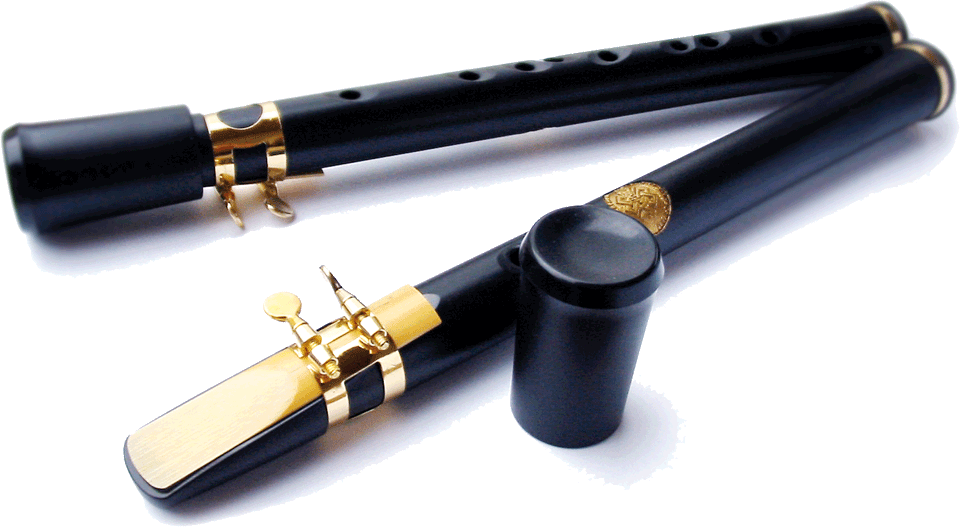
Lowest sound c'
key of F
two octaves
chromatic
a' 440 Hz
tenor saxophone reed overblows the clarinet, first overtone occuring at the twelfth
The Standard XAPHOON
The STANDARD XAPHOON is characterized above all by its precision. It was developed for schools, bands, ensembles and just for all of those people who want to have each instrument sound exactly the same. The Standard XAPHOON is produced in Indiana in the United States, with a high precision production process from the same material commonly used for clarinet, oboe, bassoon, as well as mouthpieces for many reed instruments. Due to its precise standardization, reasonable price, and extreme durability, the Standard XAPHOON is an ideal introduction to the Xaphoon instrument family.
Above all, I recommend the Standard XAPHOON for the interplay with string and keyboard instruments, C or F flute. The C instruments are somewhat shorter than the Bb Xaphoons, which is an advantage for smaller hands. In my experience, children are able to learn to play the standard XAPHOON from about the age of 6. It depends on the size of the fingers because, even 3-4 year olds have enough blowing power to get a tone from the instrument. On this instrument, the pitches of C, F, and Bb major as well as a, d and g minor are the easiest to play.
The sound is more direct and somewhat stronger than that of the MAUI XAPHOON.
Here you can hear the comparison of sounds and learn from the fingering charts.
Lowest sound c'
key of F
two octaves
chromatic
a' 440 Hz
tenor saxophone reed overblows the clarinet, first overtone occuring at the twelfth
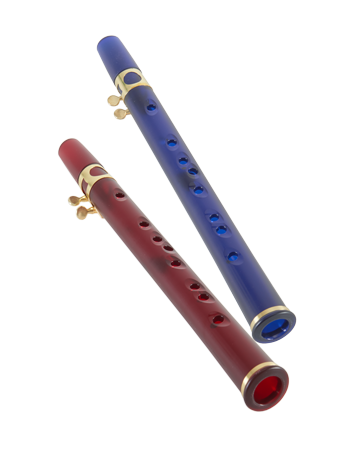 The Colored Xaphoons
The Colored Xaphoons
The COLORED XAPHOON is characterized above all by its precision. It was developed for schools, bands, ensembles and just for all of those people who want to have each instrument sound exactly the same. The COLORED XAPHOON has the same construction process as the STANDARD VERSION of the Xaphoon. It is made from ABS plastic in Indiana/USA in a high-precision manufacturing procedure. Due to its precise standardization, reasonable price, and extreme durability, it is an ideal introduction to the Xaphoon instrument family.
Above all, I recommend the Standard XAPHOON for the interplay with string and keyboard instruments, C or F flute. The C instruments are somewhat shorter than the Bb Xaphoons, which is an advantage for smaller hands. In my experience, children are able to learn to play the standard XAPHOON from about the age of 6. It depends on the size of the fingers because even 3-4 year olds have enough blowing power to get a tone from the instrument. On this instrument, the pitches of C, F, and Bb major as well as a, d and g minor are the easiest to play.
The sound is more direct and somewhat stronger than that of the MAUI XAPHOON.
Click for the Xaphoon Sounds and Video and the fingering charts.
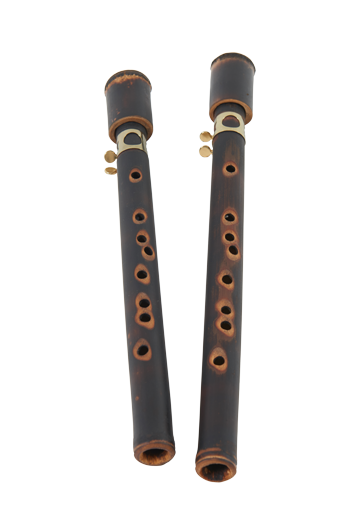 The Maui Xaphoon
The Maui Xaphoon
Each individual MAUI XAPHOON is handmade by Xaphoon inventor Brian Lee Wittman in his small workshop in Hawaii. The bamboo for the instruments is directly cut on the island of Maui from one of the fast-growing bamboo forests, stored and later processed into the Xaphoons.
Due to its natural bamboo material, the MAUI XAPHOON is more individual compared to the STANDARD XAPHOON. This means that while the key is of course the same, the tones are somewhat different. For example, sometimes they tend more in the direction of the clarinet and sometimes more in the direction of the saxophone. The sound is more natural, perhaps also somewhat warmer than the Standard XAPHOON.
Lowest sound c'
key of F
two octaves
chromatic
a' 440 Hz
tenor saxophone reed overblows the clarinet, first overtone occurring at the twelfth
Maui Xaphoon -C-
The MAUI XAPHOON C is the original Xaphoon.
For a long time, it was the only type of Xaphoon that was manufactured and is the first patented instrument of this sort.
Above all, I recommend the C XAPHOON for the interplay with string and keyboard instruments, C or F flute. The C instruments are somewhat shorter than the B Xaphoons, which is an advantage for smaller hands. The MAUI XAPHOON C can be learned well starting at about six years old including alone. On this instrument, the pitches of C, F, and Bb major as well as a, d and g minor are the easiest to play.
Lowest sound b'
key of E flat
two octaves
chromatic
a' 440 Hz
tenor saxophone reed overblows the clarinet immediately in the duodecimo
Maui Xaphoon -B-
I recommend the Bb-XAPHOON especially for playing in ensemble with other “Bb instruments” such as most reed or brass instruments. Many jazz pieces are written in Bb keys. The following keys are easiest to play on this instrument: Bb/Eb/ Ab major and G/C/A minor.
The Bb XAPHOON starts a whole tone lower than the C instrument and the tone is even more sonorous and full.
Click here for the sounds of the Xaphoon and learn from the scale of the xaphoon.
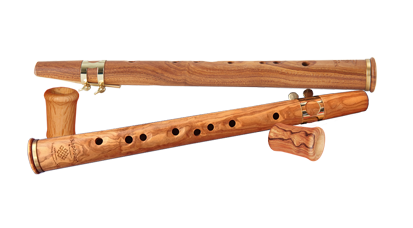 Xaphoon de Catalunya
Xaphoon de Catalunya
The Xaphoon de Catalunya is the “newest” Xaphoon. It was developed in 2014 by Brian Wittman in collaboration with Xaphoon Europa and is manufactured in northern Spain, approximately 80 km north of Barcelona, in the workshop of Francesc Sans Sastre, who specialises in the construction of traditional wind instruments. The wood for the instruments comes from the region and is primarily sourced from holly oak and olive trees.
This wooden Xaphoon is now the third Xaphoon generation that has been specially developed for the European market, in succession to the Maui Xaphoon and the Standard Xaphoon.
Xaphoon de Catalunya Oak
The oak for this instrument grows in northern Spain. It is the less expensive version of this Xaphoon. The tone is a little more powerful than that of the olive wood Xaphoon but still very resonant.
Xaphoon de Catalunya Olive
The Xaphoon made of olive wood is certainly the noblest among the Xaphoons.
Olive wood grows slowly. It creates wonderful structures and, when shaped into a Xaphoon, draws out a soft warm and full tone.
The Xaphoon de Catalunya is only manufactured in the C version at the moment. There are plans to follow this with a Bb version and several different types of wood at a later date.
Listen to sound examples here and play with the help from the fingering charts.
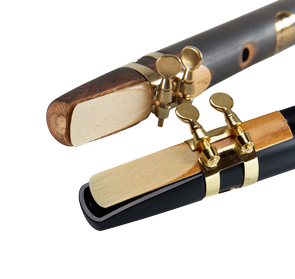 The Mouthpiece
The Mouthpiece
The mouthpiece of the Xaphoon is wider and more open than other mouthpieces.
This is because it helps the instrument to create a pleasant, soft tone. When developing the Xaphoon, our first priority was the tone colour. After all, this is the hallmark of the Xaphoon: it is a small, convenient instrument with an impressive tone. Here it was necessary to make a small compromise and give the mouthpiece a wider opening compared to a saxophone or a clarinet. This means that the air can pass more slowly through the mouthpiece, making the tone softer and more sonorous. With such a small instrument, you can really hear the difference. The narrower the mouthpiece, the more nasal or squawky the tone is.
The very wide mouthpiece means that it’s easy to change the pitch of the tones. If I press more strongly on the reed, the tone becomes higher; if I release the lip pressure, the pitch sinks a little. This way, I can modulate and adjust every tone. To maintain a constant pitch requires some practice, however.

